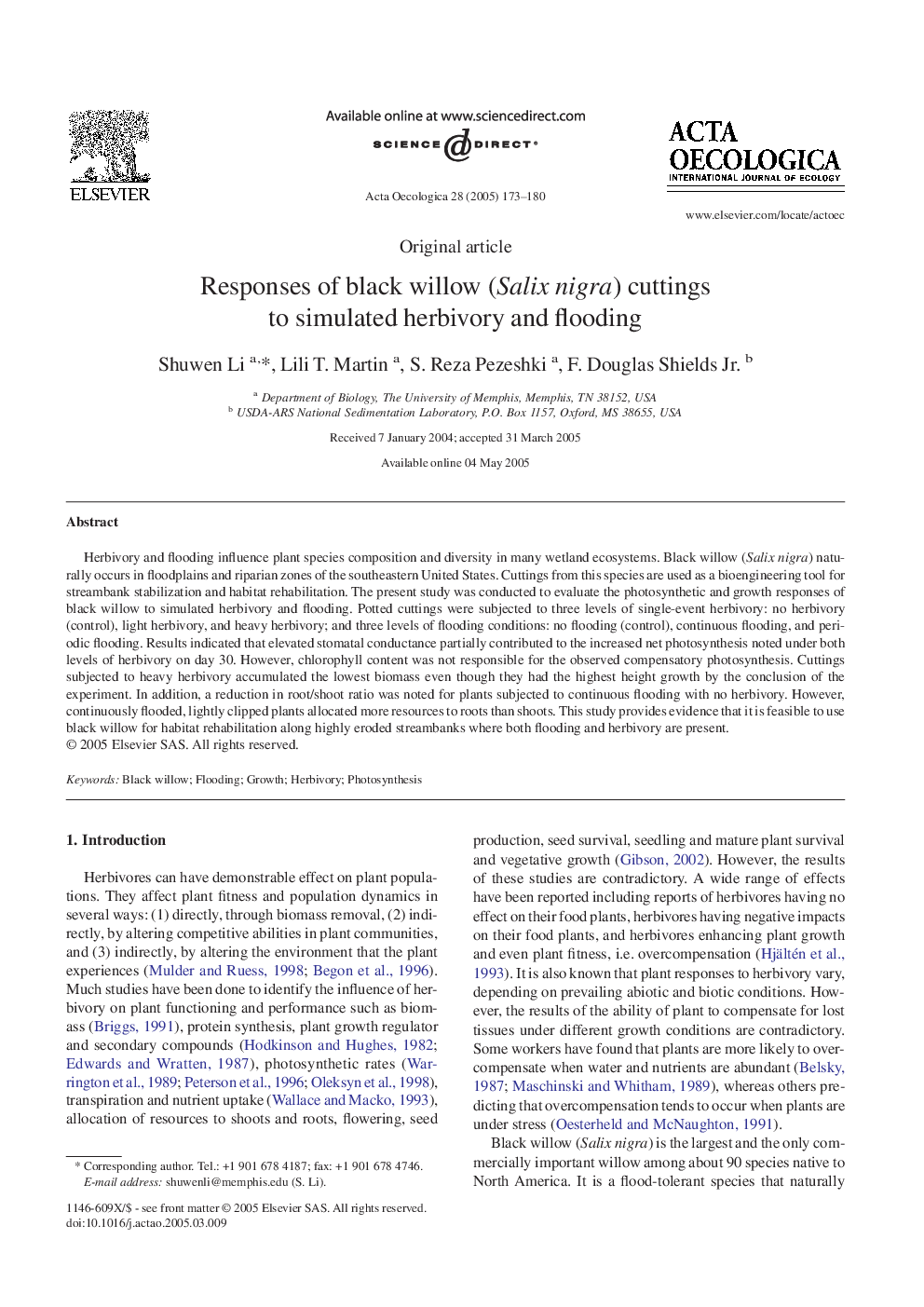| Article ID | Journal | Published Year | Pages | File Type |
|---|---|---|---|---|
| 9445005 | Acta Oecologica | 2005 | 8 Pages |
Abstract
Herbivory and flooding influence plant species composition and diversity in many wetland ecosystems. Black willow (Salix nigra) naturally occurs in floodplains and riparian zones of the southeastern United States. Cuttings from this species are used as a bioengineering tool for streambank stabilization and habitat rehabilitation. The present study was conducted to evaluate the photosynthetic and growth responses of black willow to simulated herbivory and flooding. Potted cuttings were subjected to three levels of single-event herbivory: no herbivory (control), light herbivory, and heavy herbivory; and three levels of flooding conditions: no flooding (control), continuous flooding, and periodic flooding. Results indicated that elevated stomatal conductance partially contributed to the increased net photosynthesis noted under both levels of herbivory on day 30. However, chlorophyll content was not responsible for the observed compensatory photosynthesis. Cuttings subjected to heavy herbivory accumulated the lowest biomass even though they had the highest height growth by the conclusion of the experiment. In addition, a reduction in root/shoot ratio was noted for plants subjected to continuous flooding with no herbivory. However, continuously flooded, lightly clipped plants allocated more resources to roots than shoots. This study provides evidence that it is feasible to use black willow for habitat rehabilitation along highly eroded streambanks where both flooding and herbivory are present.
Related Topics
Life Sciences
Agricultural and Biological Sciences
Ecology, Evolution, Behavior and Systematics
Authors
Shuwen Li, Lili T. Martin, S. Reza Pezeshki, F. Douglas Jr.,
